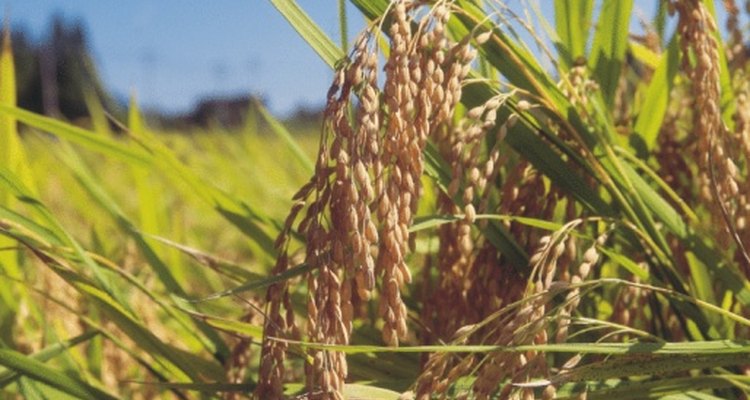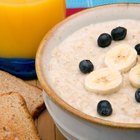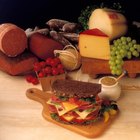
Sorghum is a grain crop grown in many parts of the world. The United States is the world’s largest producer of sorghum. While Americans do use sorghum, India and parts of Africa consider it a particularly valuable food source. Milling the grain like wheat to make flour is one way to use sorghum; however, this is not one of the better-known uses of the crop.
Animal Feed
According to the Sorghum Grower’s Association, the most common use for sorghum in the United States is as feed for livestock. Horses, cattle, pigs and chickens all commonly eat sorghum feed. Farmers often mix sorghum with other grains to create blends for their livestock. Growing sorghum is a way to protect farmers in case of drought because it requires less water than other grains. This means that livestock will have food even in years without much rain.
Cereal Grain
People eat sorghum as a common cereal grain in many parts of the world. In the United States, cereal manufacturers use it less often than corn and oats, which grow well in this climate and are easier to process than sorghum. However, in the early 2000s there has been a renewed interest in sorghum cereals because the grain is gluten-free, so people who have trouble processing glutens can enjoy sorghum products instead of wheat, corn or oats.
Beer
In Africa and parts of Europe, Sorghum beer is nearly as common as brews made from barley or hops. Sorghum beer is gaining popularity in the United States and the rest of the world in the early 21st century because of a developing interest in microbrew and imported beer. Like other sorghum products, sorghum beer is gluten-free.
Syrup
Manufacturers and farmers make syrup from sweet sorghum. The process is similar to making sugar from sugar cane. People use the syrup as an alternative to sugar or other sweeteners. According to the National Sustainable Agriculture Information Service, sweet sorghum is an ideal addition to a small, diversified farm. This is because chickens and other livestock will eat part of the plant and farmers can make syrup out of the remaining plant parts.
Related Articles

Bulgar Wheat Vs. Couscous

Staple Foods in Africa

Uses of Cassava Flour

How to Replace Wheat

What Is Dye Made From?

What Is Agave Cactus Juice?

Can I Use Rolled Oats in Place of ...

Is Wheat Grass an Alkalizing Food?

German Beer Vs. American Beer

How to Eat Buckwheat Raw

How to Substitute Light Corn Syrup in a ...

What Is the Nutritional Value of Wheat?

List of Biodegradable, Every Day ...

Description & Characteristics of ...

Which Country Produces the Most ...
How to Cook Volcano Rice

What Additives Are in Flour?

How to Cook Hot Cereal With Oat Bran in ...

How to Make Pumpernickel Flour

How to Make Carob Juice
References
Writer Bio
Tracy Schooler writes about finance and household issues for various financial websites. She has an associate degree in accounting and is working toward her bachelor's degree.
Photo Credits
Jupiterimages/Photos.com/Getty Images